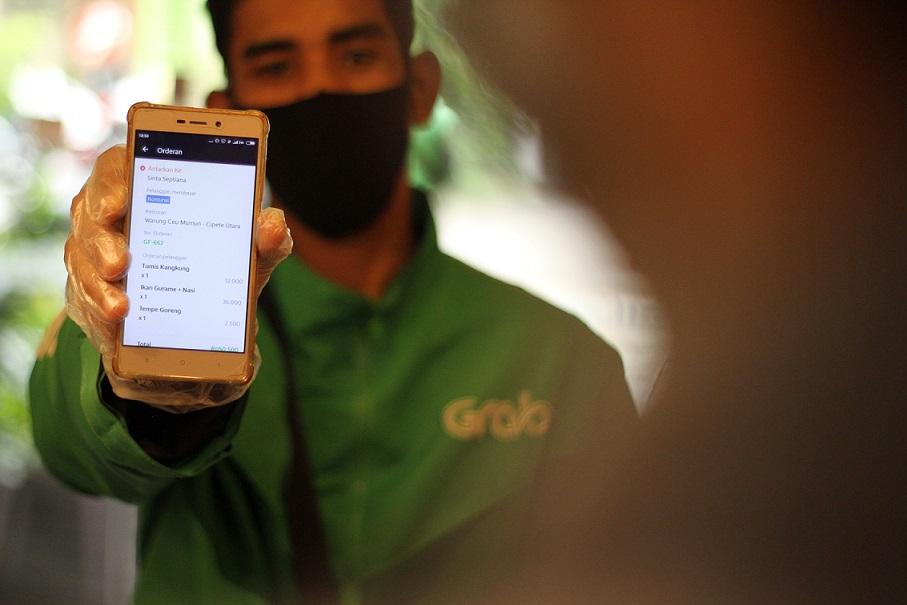While the Covid-19 pandemic has hit the economy hard, people are still ordering food and other goods on delivery services and have actually grown more generous toward delivery drivers, giving them larger tips than before the pandemic began, data from Grab Indonesia, the local branch of the Singapore-based ride-hailing, delivery and payment service company, showed on Tuesday.
The data also showed increases in almost all services available on the Grab app. Orders were up by 22 percent on its instant courier service GrabExpress in March compared to February.
One thing to note is that GrabExpress deliveries from social media-based sellers increased by 40 percent in March, also compared to the numbers in February.
This supports claims that online sales are the new temporary backbone of the economy.
Orders for groceries on GrabMart were also up by 22 percent in March compared to the previous month.
Meanwhile, a comparison of data from October 2019 – before the pandemic began – with data from March 2020 on Grab’s meal delivery service GrabFood showed a 4 percent increase in the number transactions.
The average order value rose by 7 percent.
Interestingly, the pandemic has also brought out the best in people with more of them tipping Grab’s delivery drivers.
The average tip on GrabFood orders grew in value by 63 percent in March compared to the previous month.
The number of drivers receiving tips in March also increased by 38 percent.
Grab’s merchants have also been helping the delivery drivers by offering a special menu for them.
Customers can order items from the special menu – which are usually cheaper than the items on normal menus – to be given to the drivers when they pick up their orders.
More than 5,000 GrabFood merchants now offer special menus for the delivery drivers.
According to the Grab data, over 500,000 items from these menus had been purchased by Grab users.
Changes in Consumer Behavior
The Grab data also revealed several changes in consumer behavior during the pandemic.
Before the outbreak began, Indonesians mostly ordered meals for dinner.
But according to March’s data, most customers now ordered meals during lunchtime.
There was a 9.4 percent increase in average basket size during lunch in March compared to October.
Orders for healthy food rose by 7.4 percent in March, also compared to October 2019.
Top delivery destinations on GrabExpress in March were residential areas (42 percent), healthcare facilities (14 percent) and banks (12 percent).
Before the pandemic, the top destinations were offices and residential areas.
The data showed where most activities are happening during the pandemic and large-scale social restriction (PSBB) – at home.
The delivery trends on Grab were consistent with the Covid-19 Community Mobile Report released by Google, which showed increasing mobility trend only in places of residence, with an 18 percent increase from the baseline figure.
The report, which used data from March 15 to April 26, highlighted percentage changes in several provinces in Indonesia.
It used the median value from data collected from Jan. 3 to Feb. 6 as the baseline.

